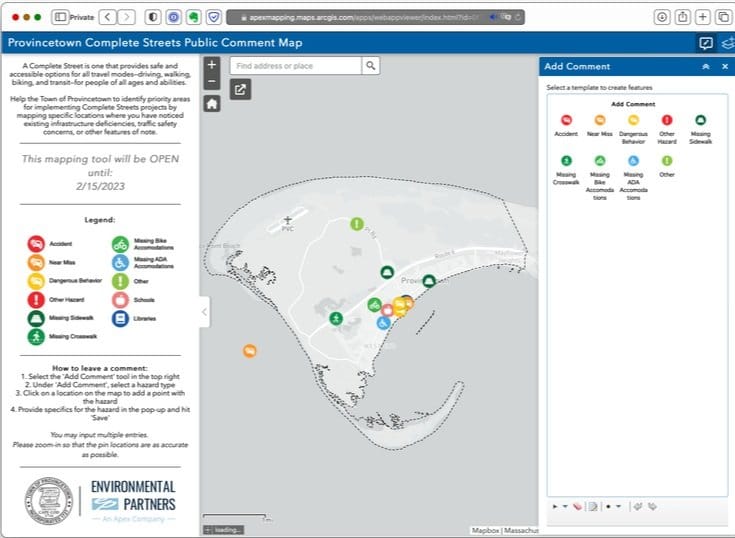Making Streets Safer: Prioritizing Complete Streets

Provincetown is finally getting close to implementing its Complete Streets policy.
The policy I wrote with Provincetown 365 back in 2016 has been revised, reviewed, and adopted. Now the town is on to the next step: Creating a “prioritization plan” of possible projects that the town could apply to the state to fund.
The consulting engineers for this step of the project created an interactive map that anyone can add their comments to. You can specify a particular category (missing ADA ramp, missing sidewalk, missing bike lane, etc.) or be more general with some open-ended categories like “Dagerous Behavior”, “Accident,” “Near Miss”, or “Other.”

Once the prioritization plan is completed, the town can apply for state funds of up to $500,000 toward construction of specific projects. It’s a competitive process, so there’s no assurance that projects will get funded by the state.
Of the 312 towns and cities in Massachusetts, 229 have an approved prioritization plan at this point.

What’s a Complete Street?
The term “complete street” is a catchall for adapting car-centric streets to add support for walking, bicycling, disabled access, and transit. There’s no single template for a complete street, since context matters in design. A complete street design in a city like Boston is a very different street than a complete street in Provincetown.
There are lots of opportunities for improvements to local streets here, with small-scale projects to make streets safer. This could include “daylighting” intersections to improve visibility of people walking and biking, building raised crossings and intersections, marking walk/bike paths along streets, upgrading curb ramps to be ADA-compliant, adding sidewalks where they are missing, and adding bike lanes or wayfinding signage for walking and biking routes.
